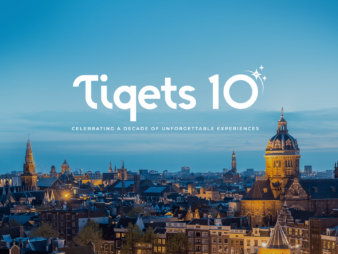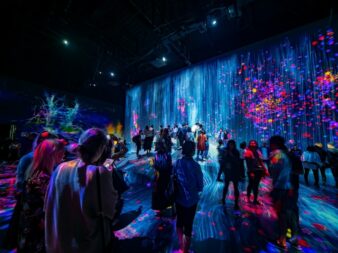“Now, when you search in Maps for specific things like the best place to find ‘animal latte art’ or ‘pumpkin patch with my dog,’ you’ll get photo-first results of what you’re looking for.” - Google Maps
When Google recently introduced updates to its Maps tool, the last thing they happened to mention was photo-first results. But for museums, attractions, and tours, this new feature is a critical and potentially lucrative change. Whether you think a picture is worth 1,000 words – or more like 100,000, given recent inflation – the right photographs will always sell your experience faster than text alone could.
So how is Google instituting the photo-first change? That’s what makes it interesting.
If someone types a non-specific query such as things to do near me or things to do with families into Google Maps, the tool will use artificial intelligence (AI) to surface nearby options for museums, attractions, tours, and more. But instead of a simple link, the search result will include images.

The same is true for more specific Google Maps search queries: museums with cafes nearby or roller coasters. The images that surface are clickable, which means the searcher can connect straight through to the source of the image – your museum or attraction’s website or ticketing page.
From the internet user’s point of view, this makes Google Maps search more visual and interesting. A curious traveler doesn’t have to have a particular destination in mind, but could simply be looking for something to do in a general area. From the museum or attraction’s point of view, it makes Google Maps more useful in terms of marketing.
Knowing not just what Google is doing but why, how, and how you can take advantage of it will give your museum, attraction, or tour a marketing advantage in 2024 and beyond.
What photo-first results mean for museums, attractions, and tours
Google’s goal is to emphasize visually rich content in order to better serve up answers to Maps users, especially younger audiences who tend to lean into visual formats first. Those who might ordinarily navigate over to TikTok or Google Search could stay right in Google Maps and cut out the middleman as they look for great ideas for things to do.
Google says that another goal of this new feature is to boost exposure to local travel businesses and tour operations, so they can make the most of organic discoverability. Google has also said that the ultimate mission for Maps is to become more of a “planning tool” than a “transactional tool” – a place that people will visit to plan out a trip or a vacation rather than simply to find directions at the moment they need them.
What does this mean for museums, attractions, and tours? Time to step up your game with your visuals.
By placing visually immersive search in its Maps app, Google will boost the discoverability of museums, attractions, and tours – particularly those hidden gems that aren’t widely known. If the market adapts, and users turn to Google Maps for activity inspiration, the new feature could lead to increased direct bookings for museums, attractions, tours, and all kinds of local venues.
For the purposes of staying one step ahead of the marketing game, let’s assume that’s going to happen. Having good images is about to get a lot more important than ever before. Here’s how to take advantage of it.
How to take advantage of Google Maps’ photo-first results feature
First things first. The photos that surface in the new Google Maps feature are chosen by AI and come primarily from Google Business profiles. This includes both the images you upload to your Google Business profile and those visitors upload.
For your best odds of the ideal photos showing up, make sure your Google Business profile showcases your best photos! You may need to hire a professional photographer, but you could also lean into photos that others have taken of your venue and posted to social media. Follow the hashtags to find those images, and don’t forget to ask for permission.
The challenge of finding the right photos can be especially hard for some emerging destinations, where small mom-and-pop proprietors might not have time to learn everything there is to know about the images that Google Maps aggregates. Smaller venues don’t always have dedicated marketing teams, and even if they do, those teams are busy!
The crux of what you need to know: Choose photos that are attention-getting, even as a thumbnail on a small screen. Colorful, eye-catching visuals are a good bet. Choose images that are both captivating and relevant to the actual experience you’re selling. The quickest way to lose your audience is to entice them to click on an exciting image that has nothing to do with the page they land on.
And encourage your visitors to upload photos, too — the best ones, of course.
One challenge you might face with photo-first results
Coming up with the right images is your first challenge. But taking the time to actually upload and connect them to your Google Business profile might be a hurdle of its own. Most museums, attractions, and tours don’t have a dedicated IT team, but carving out the time to take care of these arguably tedious marketing tasks is so important to your museum’s credibility and visibility.
This is especially true when people are searching for something to do in their area, but have never heard of your museum, attraction, or tour. Getting your audience’s attention with a compelling, professional-looking photo on Google Maps can move them from the “discovery” phase of their search into the “purchasing” phase, where they take the time to buy tickets to your venue. Ultimately, you want your online presence to be a straight path to purchase, no matter where the visitor begins their journey.
Don’t forget about Google Things To Do
You may remember another recent Google feature update: the carousel addition to Google’s Things To Do. If a curious citizen or traveler types, say, things to do in Paris into a regular Google search bar on their phone, they may see something like this:
A carousel pops up so the user can scroll sideways through visually led tours and activities for specific locations. This has been a particularly important update for activities that aren’t tied to a specific location, like city tours. With the addition of Things To Do, Google included those roving activities in their search results much more organically – and visually.
If you’re in charge of marketing for the Eiffel Tower or the Louvre, you might not care too much about this feature. But take a look at the top row in the above picture: sponsored ads by Balloon Flight Over Paris, Monet’s Garden, and more. Those lesser-known attractions finally get the attention they deserve with this new feature. And visitors have a chance to find out about something new and different beyond the mainstream tourism fray.

For small museums and attractions, these sponsorship options within Google Things To Do are huge. Even for more well-known venues, they can help direct attention to specific events and exhibits the public may not know about.
With Google Things to Do and Google Maps in cahoots, travelers, adventurers, and bored citizens of your town or city get a visual-first experience no matter how your museum, attraction, or tour ends up in their search results.
Bring all your Google marketing efforts together
“It’s really important for us to focus on making Google more useful for users who are seeking things to do, whether it’s someone planning for their next big big trip, the one they’ve been dreaming about for a long time, or people looking for inspiration on what to do where they already are.” - Julie-Anne Negiar, Regional Product Lead, Google Things To Do
You’d be remiss if you didn’t take advantage of all the free marketing opportunities Google brings to the world of tourism. Julie-Anne Negiar, Regional Product Lead of Google Things To Do, calls Google a “full funnel product across all the different research phases, whether you’re exploring, discovering, researching, or actually booking.”
Google Hotels, Google Flights, and other Google tools add to the mix of ways people can search and discover. And then, of course, there are ample paid advertising options Google makes it easy to take advantage of, including within Google Things To Do.
If you’re doing your homework, you can show up everywhere Google makes it possible for you to appear – and do it in full color, with vibrant imagery and concise, captivating descriptions that link through to an easy and obvious way to buy tickets.
Don’t forget about the power of an OTA
Here’s where an OTA comes in. An online travel agent like Tiqets can expedite your ticketing efforts by exposing your museum or attraction to an even larger audience, then providing a seamless ticketing checkout experience so curious online visitors convert to actual onsite visitors.
Piggybacking on the broad and targeted marketing efforts of an OTA, along with all the possibilities Google provides, ensures your museum or attraction reaches the most people, and gets them in your doors (or on your bus, or in your air balloon) sooner.



